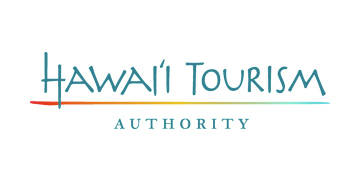The state finally has its first statistical glimpse of how tourism is faring under the new pre-travel testing program.
The Hawaii Tourism Authority released visitor statistics for October on Tuesday, giving insight to how tourism’s return to the Aloha State looks after the Oct. 15 implementation of the pre-travel testing program allowing trans-Pacific travelers to avoid a 14-day mandatory quarantine amid the coronavirus pandemic.
“This has been a day-by-day, week-by-week, hour-by-hour type of situation,” said Ross Birch, executive director of the Island of Hawaii Visitors Bureau. “Our numbers have been coming up.”
On Hawaii Island, arrivals by air more than tripled to 10,640 during October, up from from the September total of 3,335; this total still represents a decrease of 91.8% from the same month in 2019. Overall, the state saw 76,613 air arrivals – up from 18,868 in September – which is a 90.1% decrease from 2019.
On the Big Isle, this visitor count hasn’t translated into an increased demand for hotel rooms, likely because most hotels on the island had yet to re-open in October. Visitors have largely elected to stay at short-term vacation rentals. Demand at STVRs has increased by more than 81% from September’s total, compared to a rise in demand of less than 6% at hotels.
“Most of our hotels have opened within November, either the first, the seventh or the 15th, some of them on the 20th, and we’ve got one more that opens on Dec. 1,” Birch said. “With those hotels now coming onboard, we see a robust pace moving forward.”
Despite some concern about the island’s initial second-test requirement, hotel occupancy rates remained steady at about 20%, in line with the state as a whole. The state saw a significant jump in occupancy rates for STVRs; statewide, 22.7% of STVRs were occupied in October compared to just 8.8% in September. This was mirrored on Hawaii Island, as the rate increased from 10.7% to 21.8%.
While the numbers don’t indicate a large surge, Birch is optimistic about the pace of tourism’s growth on Hawaii Island.
“We are accepting a slower pace with visitation to help us,” he said. “We want to be able to manage it as it comes in. We want to be able to have the right protocols in place so it’s a better experience for the visitors and we make sure it’s a safe place for our residents.”
The recent surge of COVID-19 cases on the mainland appears to have put a dent in the HTA’s projections of scheduled air seats arriving in the islands moving forward. The most recent projections from a Nov. 6 release estimated scheduled arriving seats to lag behind 2019’s total by 22.3%; this is in contrast to Oct. 20 projections estimating an increase of 10% from 2019 totals arriving in Kona. These seats aren’t necessarily ones that were booked. The total is simply an indication of arrival capacity.
“We’ve had a pretty big ramp up going from pre-Oct. 15 to where we are today with the seat capacity,” Birch said. “I think that is going to be at a level that will hold us through the holiday season. It all depends on how things are going to pan out on the mainland through the holidays if we’re going to see more of a jump. … Our numbers have been very promising for November.”
Altogether, the Hawaii Tourism Authority’s statistics appear to paint a picture of a tourism industry ready for a return of large-scale tourism within the first few months of 2021. Whether the anticipated demand will meet these expectations is ultimately the billion-dollar question.
Email Tom Linder at tlinder@westhawaiitoday.com.






